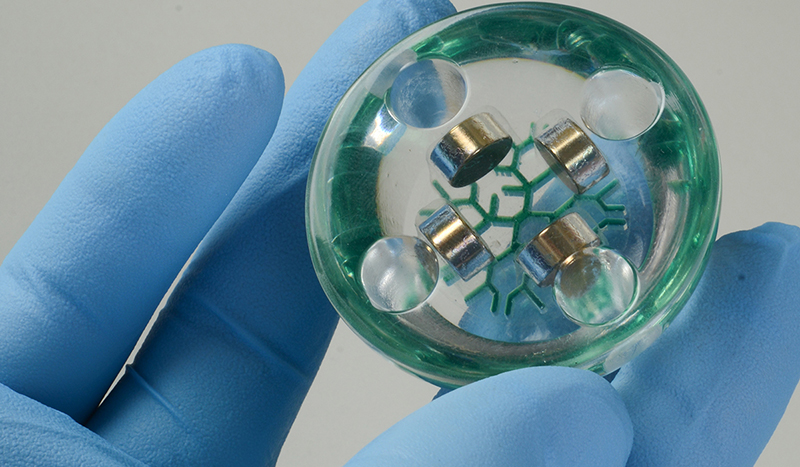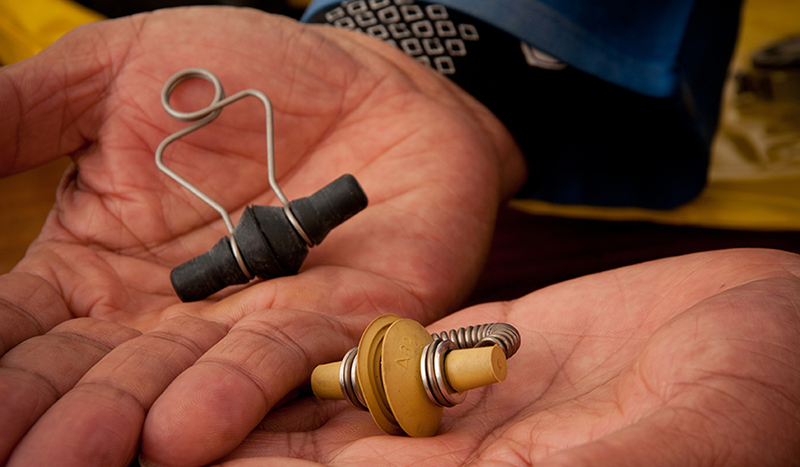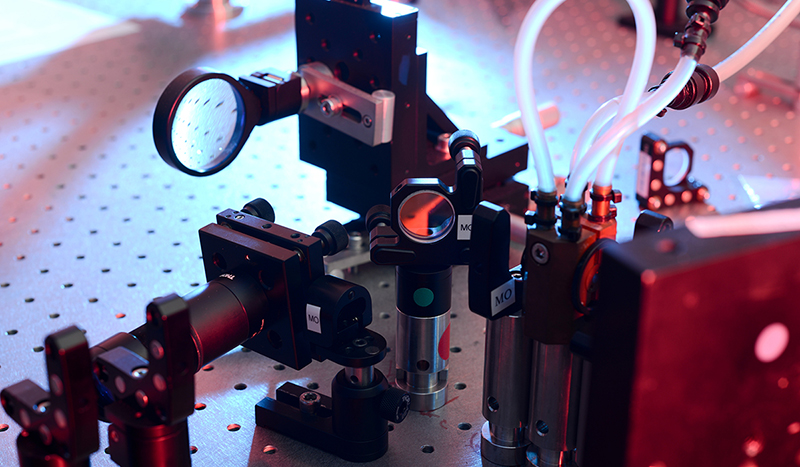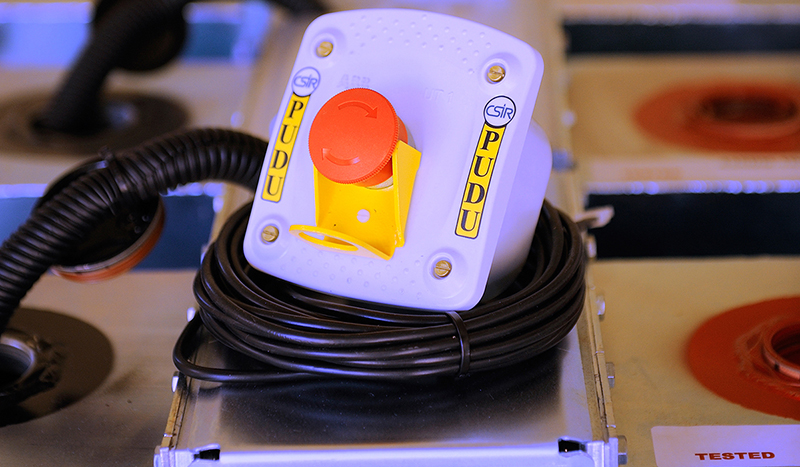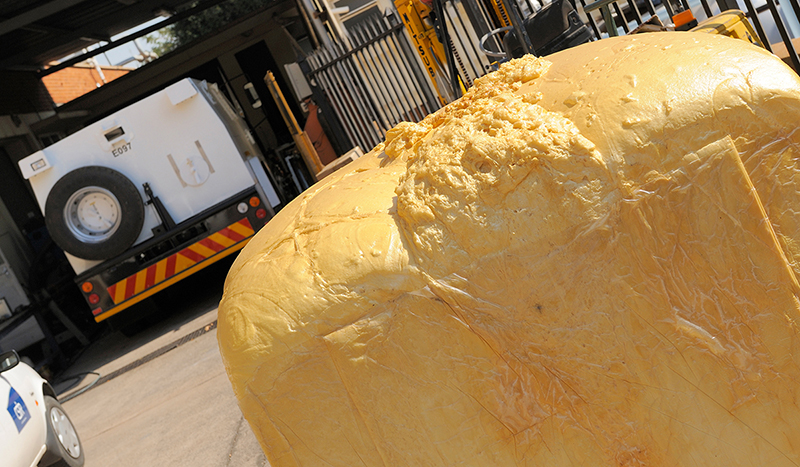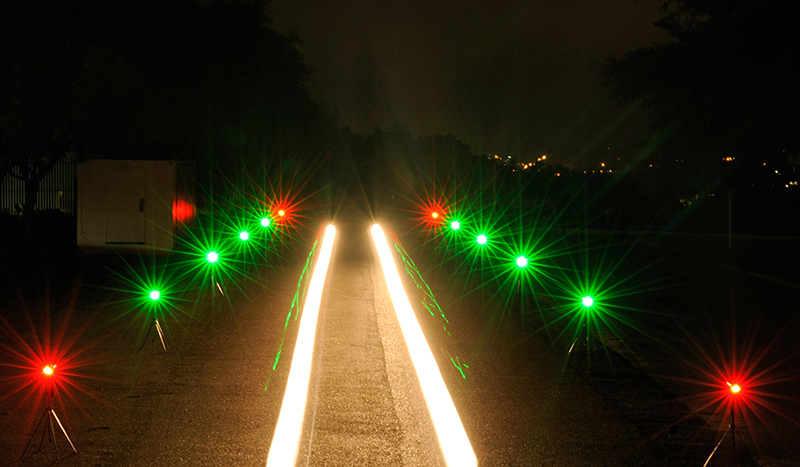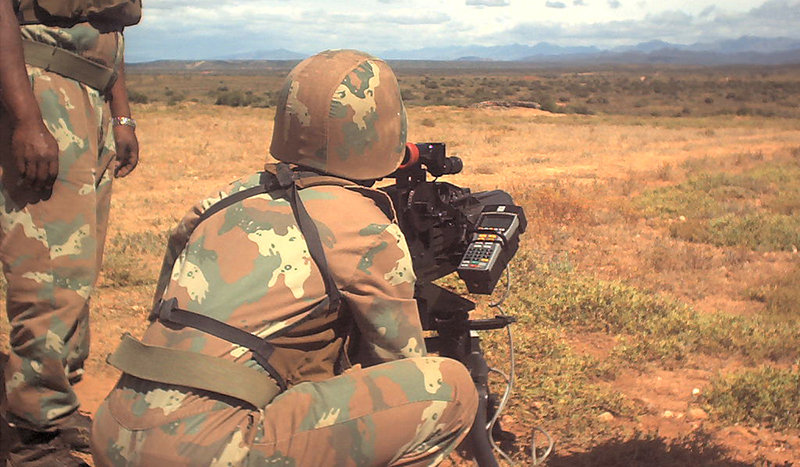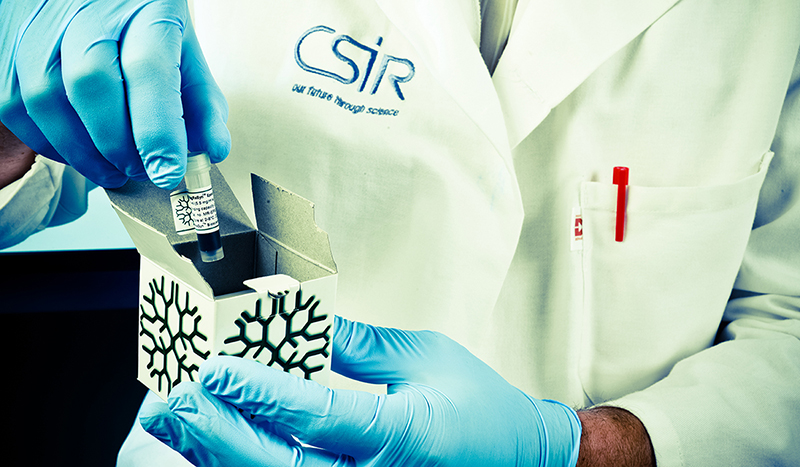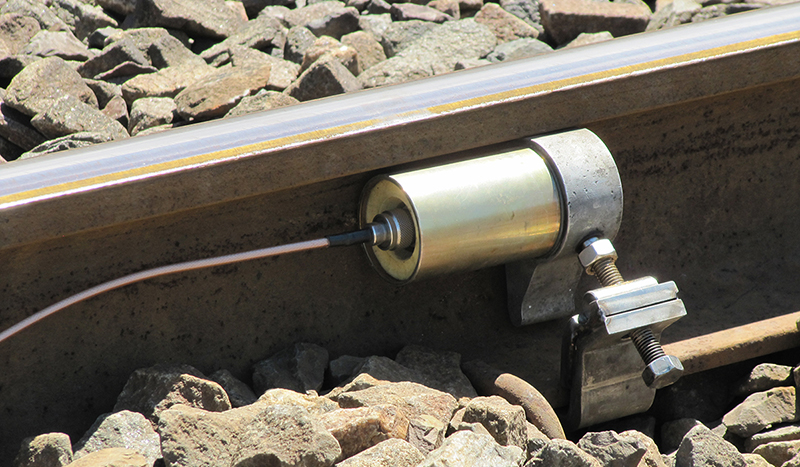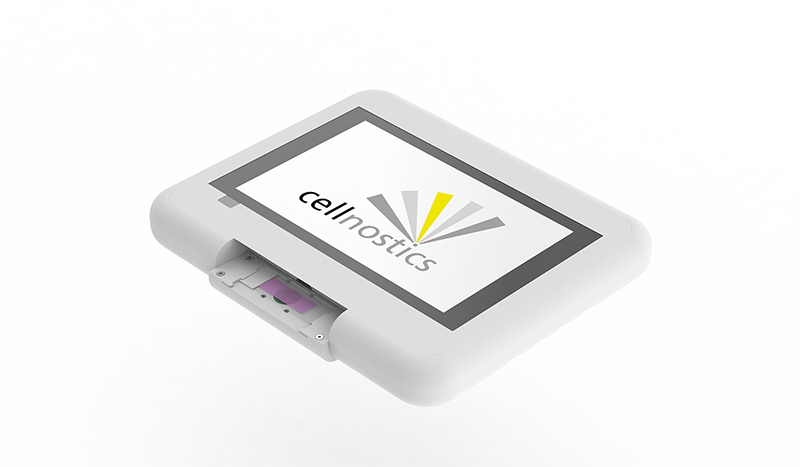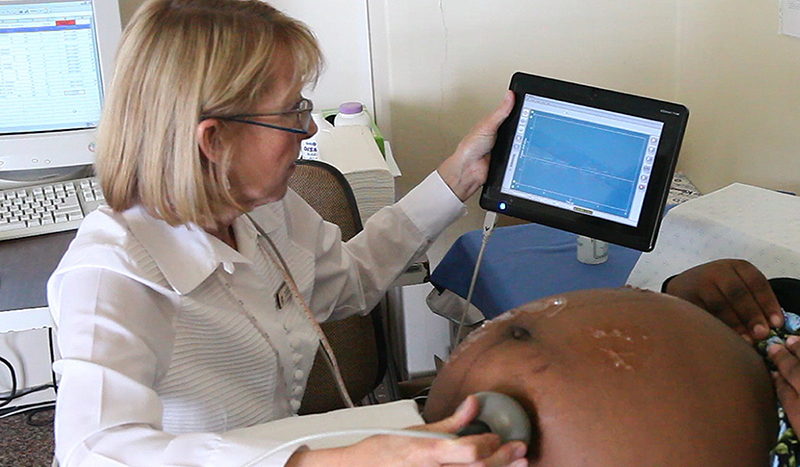Advancements & Achievements« Back to Advancements & Achievements Listings
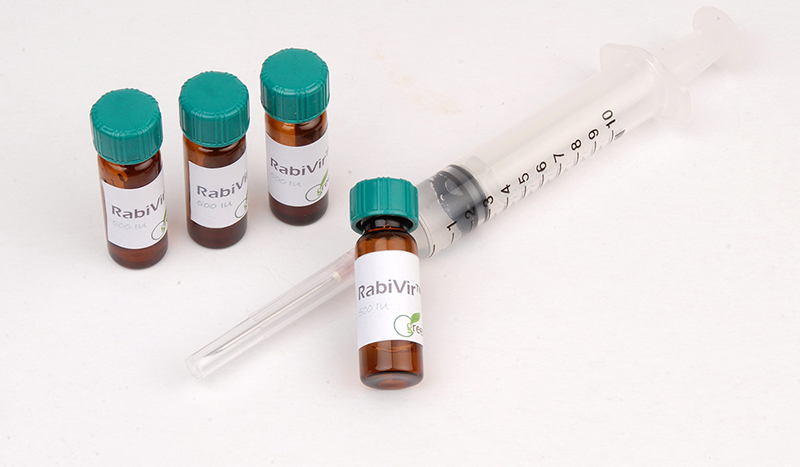
Rabivir, a rabies antidote produced from genetically modified tobacco plants. (click image to view slideshow)
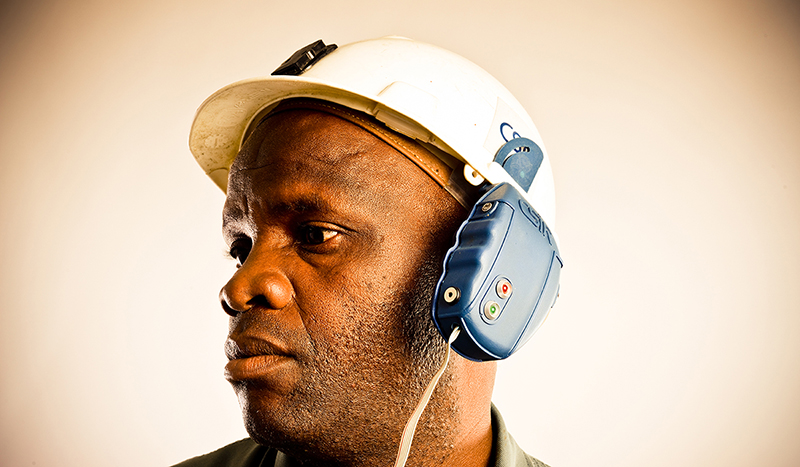
Electronic sounding device used for the detection of loose, overhead underground mines, seen here fitted to a mining hard hat. (click image to view slideshow)

The CoroCAM, which is used to visually display the corona discharges from defects on high-voltage electrical installations. (click image to view slideshow)

Mine boots, which protect against the detonation of anti-personnel blast mines. (click image to view slideshow)
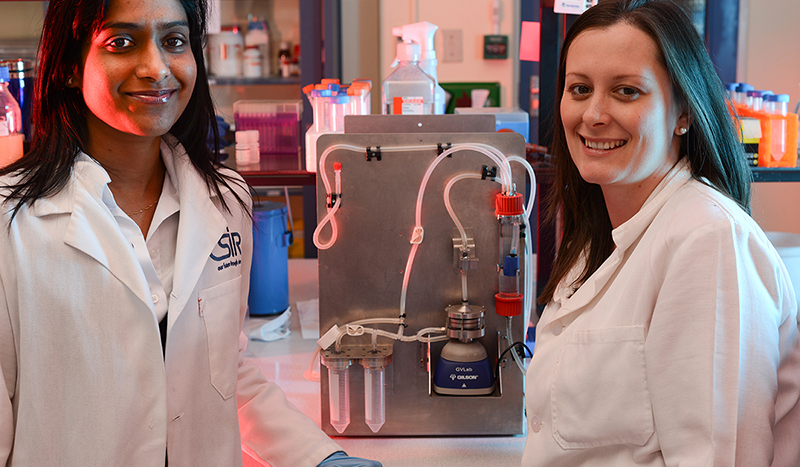
Avashnee Chetty and Claire Rossouw, with the bench-top thermoresponsive 3D cell culture device in the background. (click image to view slideshow)
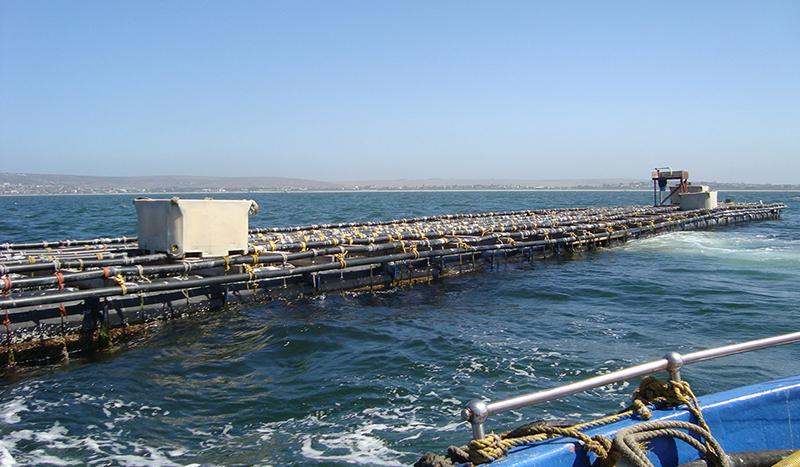
Mussel raft, which was purchased by C-Mussels through enterprise creation assistance from the CSIR. (click image to view slideshow)
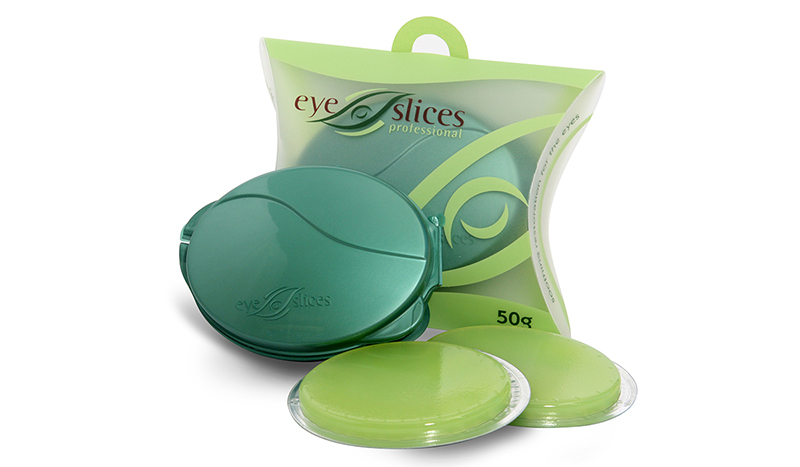
Eyeslices, a cryogel pad developed from the reinvention of a CSIR developed polymer gel. (click image to view slideshow)

Fever-Tree candles, developed through CSIR research on the mosquito repellent properties of indigenous plants. (click image to view slideshow)
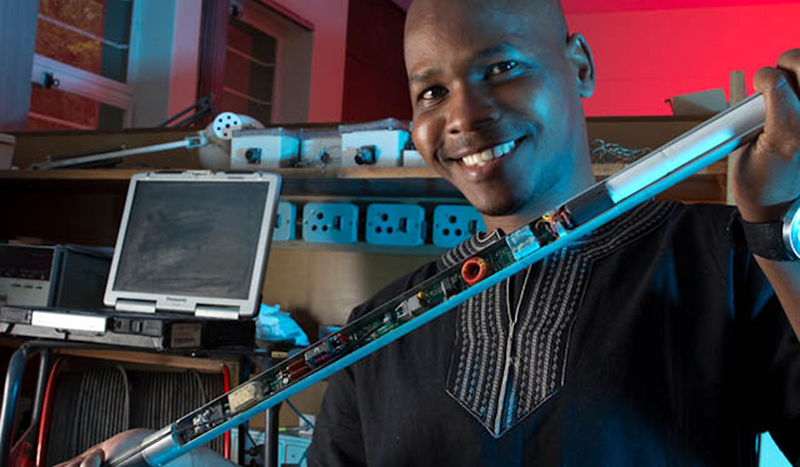
Josias Nonyana, CSIR electronic engineering technologist, holding a receiver printed circuit board housed in a pipe-like probe (borehole radar system). (click image to view slideshow)
How South African Technologies Are Changing the World and Competing in the Marketplace
By Rowan Philp
A South African research center—the Council for Scientific and Industrial Research (CSIR)—was the driving force behind the world’s lithium batteries, from those in your laptop to cell phones and the Chevy Volt, in addition to the time machine now used by the world’s leading road engineers.
And the SABLE Accelerator understands that South Africa’s CSIR, a government- and private sector-funded research and innovation hub, has just made a major global breakthrough in laser technology, which could help shape the future as fundamentally as the “tube” behind television.
This technology was developed by the CSIR's National Laser Centre and is the world's first digital laser, which allows the laser beam to be manipulated into multiple shapes, whereas traditional lasers appear only as a small point. While it is still being refined, this multifunctional technology will ultimately simplify numerous applications and will have implications across a number of industries. Watch the video below to learn more.
In June 2013, the CSIR's National Laser Centre also invented the flame lens—a system that literally uses fire to focus powerful laser beams that would otherwise destroy conventional glass lenses.
Focusing the brainpower of 2,500 scientists, inventors and developers, the CSIR has quietly, over the past 68 years, developed everything from the world’s first injectable plant-produced medicine and a satellite-based fire warning system to aircraft design tools and a low-cost computer for the blind. Yet many promising inventions are literally sitting on the shelves of its sprawling Pretoria campus, waiting for the entrepreneurial catalyst needed to convert inventions into innovations and improve lives around the globe.
In a world first, the CSIR has invented a system that cheaply prevents train derailments by monitoring the entire track with guided ultrasound waves. A pilot unit on two lines in South Africa prevented two inevitable derailments in a single year, according to the CSIR, which listed the average cost of each derailment at $5 million. But this solar-powered breakthrough technology—which does not interfere with train operation—still awaits a commercial partner to go to market.
With an annual turnover of roughly $200 million, income from about 30 active technology licensing agreements was $2 million last year. About 12 new license agreements are concluded annually. According to its new Head of Technology Transfer, Dr. Sean Moolman, this was in line with the international R&D institution benchmark of 1 to 3 percent but remains at the lower end.
Some $130 million (roughly 70 percent) of the research center’s turnover is derived from contract R&D funding. However, Moolman said a major push was underway to increase the rate of start-up formation and licensing activity to commercialize a raft of new technologies.
Recently launched start-up companies include ReSyn Biosciences, offering highly customizable and ultra-high-performance microspheres for life sciences research; Tuluntulu, a company with a low-bandwidth adaptive video streaming technology platform for the developing world; and Persomics, which offers a platform for miniaturized high-throughput screening and experiments.
Moolman said it was also long overdue that South African funders, stakeholders the general public, foreign investors and strategic partners be made aware of the keen cutting-edge technology innovation at the southern tip of Africa.
A Little-Known Legacy of World-Class Innovation

Ask average South African businesspeople what their country has invented, and a
handful might suggest the automated pool cleaner and the CT scan. In fact, the list runs to dozens of major breakthroughs, including CSIR inventions like the Tellurometer, the world’s first microwave distance-measuring instrument. In medical research alone, South African innovations include electron crystallography, epigenetic therapy for blood cancers, the human heart transplant and the first barrier to STD transmission—including HIV—for women).
Ask the same group in what research areas their country is a world leader, and some might suggest banking and mining technologies and perhaps vaccines. In fact, South Africa is a world leader in everything from cell culturing to micro-satellites and the technologies of light—a core innovation hub for the CSIR.
At the most exotic end of this field, the council’s laser research group has developed devices that compete at the leading edge of the global industry, particularly in the mid-infrared range, which has applications for everything from surgery to protecting aircraft from heat-seeking missiles. It has formed a partnership with the world’s most famous optics maker, Carl Zeiss, in customizing its laser devices for next-generation missile guidance.
SABLE understands that the team has also invented a brand-new kind of laser, which promises to have a major impact in laser characterization and in fiber-optic communications. Moolman declined to provide details on the breakthrough, saying a major announcement on the implications is due to be made by the government in the weeks to come. However, he did note, “These guys are doing absolutely amazing things—they already have more than five world records for laser performance.”
The Companies Spinning Off From CSIR Innovation
Another new spin-off company, UViRCO, now leads the world in a multispectral imaging technology that was entirely invented by South Africans: the ability to detect the corona electricity leakage from power lines and sub-stations.
CEO Dirk Lindeque told SABLE the new company had already sold 320 imaging cameras and 20 large multi-cam devices to power utilities and universities from China to South America. However, the journey from invention to profitability has taken 20 years. Lindeque was a research team leader and part of a team who invented the world’s first night time corona imaging device in 1991, with a second full daylight version created in 1993.
But Lindeque said utilities were increasingly recognizing the cost and energy savings behind identifying leakages and potential blackout damage, and he noted that UViRCO’s engineers were now developing a tool to accurately quantify the losses.
And in yet another light-related technology, the CSIR has commercialized the CANDLE portable landing light system, in which remote-controlled visible or infrared lights are placed for disaster relief aircraft or military paratroopers. Already used by a number of defense forces—and having won an International Soldier Technology Award (2006)—an upgraded version incorporating an early warning system is now ready for licensing with industrial partners and military contractors.
 However, if South Africa is to be known for the new light of lasers in the future, its greatest scientific pedigree currently is the technology to unlock the oldest light in the universe—not just the visible light of the most distant galaxies, but light so old that it has been stretched into microwaves and radio waves.
However, if South Africa is to be known for the new light of lasers in the future, its greatest scientific pedigree currently is the technology to unlock the oldest light in the universe—not just the visible light of the most distant galaxies, but light so old that it has been stretched into microwaves and radio waves.
Already home to the world’s most powerful single optical telescope—the locally designed, 10.5-meter Southern African Large Telescope—South Africa is now leading the development of the world’s largest telescope of any kind, the Square Kilometer Array. Local scientists are currently building 64 locally invented radio dishes for the SKA’s precursor, the MeerKAT array, following a massive materials testing process by the CSIR.
Beyond the engineering of light, the CSIR’s portfolio of innovation extends to metal casting, technologies for poverty eradication and the life sciences. Moolman said the Persomics start-up could revolutionize DNA screening and be a core enabler for personal genomics.
Resyn Biosciences, the Pretoria-based start-up, enters the highly competitive world of “bead” biotechnologies, in which tiny artificial particles are coated with a variety of substances for medical and research use.
While existing companies offer solid or cracked micro beads, Dr. Justin Jordaan, a team leader behind the company’s patented design, says Resyn technology featured a polymer matrix with vastly higher surface area for absorption. The beads are also the first to use a compound called PEI as the primary ingredient of the matrix tangle. And, says Jordaan, the patented microspheres are magnetic, which means they can be separated from a substance they’re immersed in, like blood, simply with the use of a magnet.
Bridging the Gap Between Breakthrough and Business
In a recent article on the technology transfer effort, CSIR CEO Sibusiso Sibisi suggested, “Arguably, one of the biggest impacts CSIR research has had on an industry is in the development of the lithium ion battery, which has literally changed the world. All major manufacturers have been licensees of CSIR intellectual property.”
In the 1980s, CSIR researchers Mike Thackeray and Johan Coetzer developed spinel and other technologies, which are now fundamental to high-power, rechargeable batteries. Royalties have flowed ever since. However, in the 1990s, the CSIR and its funders at Anglo American made the ill-fated decision to suspend the development of the batteries, leaving the U.S. and others to inherit a future lithium economy worth untold billions.
 In a recent paper, Thackeray lamented his mistake, saying, “One cannot help but wonder what would have happened if Anglo and CSIR had decided to invest in lithium battery technologies over the long term.”
In a recent paper, Thackeray lamented his mistake, saying, “One cannot help but wonder what would have happened if Anglo and CSIR had decided to invest in lithium battery technologies over the long term.”
Instead, it has been innovations like the Heavy Vehicle Simulator (HVS) that have led to income for the institute. Developed in the 1980s, the HVS was the world’s first—and still leading—accelerated pavement tester, a virtual time machine that precisely simulates, within three months, what a stretch of road will look like after 20 years of traffic and weather. Now undergoing a revolutionary seventh iteration, the HVS is a 55-ton machine that forces a truck bogie onto a road surface under tons of pressure and runs it back and forth across a 12-meter track. It also features finely tuned simulations for extreme heat, cold and weather, in addition to intensive data analysis support to customers.
The California Department of Transportation uses two of the massive units to plan the complex recipe of asphalt, gravel and other layers for its roads. Chris Rust, the original pioneer of the simulator, told SABLE that 12 of the $2 million units have been sold, in addition to double-sized $4 million versions for aircraft runway testing for the US military and FAA.
“We used to sell one every two years; now it’s three each year, and we currently have three being built with three more in the pipeline,” he says. Rust said one of the invention’s unique features was that it was mobile and used on actual roads rather than test strips. And now, 20 years after the roll-out of the unit’s commercial version, simulated wear-and-tear can be compared to actual damage done over 20 years of traffic and weather.
Rust said California road officials were stunned when shown photographs of a 1992 HVS test strip alongside photographs of that same road taken last year. “The conditions were the same!” says Rust. The time machine had passed its ultimate test. He said the latest version would triple the simulation speed while dramatically reducing cost and size by removing all hydraulic systems from the unit. Rust could not reveal details of the patented mechanism, which would replace the hydraulic motors.
If the process can be imagined like a circular pizza knife being pressed through a pizza, the new system is to drive a set of wheels into roads with the pressure of 40 tons, at a speed of 40 kilometers per hour, for weeks on end.
South African innovation springs from eight publically funded science research councils, universities and the private sector. But the CSIR remains the engine behind the national effort.
According to the government’s 10-Year Innovation Plan, by 2018 South Africa should: be one of the top three emerging economies in the global pharmaceutical industry; deploy multiple space satellites, including at least one launched from its own territory; and achieve a 25-percent share of the global hydrogen and fuel cell catalysts market with novel platinum group catalysts.
The Completed CSIR Innovations Awaiting Partners
Some of the CSIR’s ready-for-transfer technologies appear to hold promise to contribute to South Africa's lofty innovation goals. Some of these include:
- A wireless mesh technology that provides affordable Internet connectivity to rural villages. Already rolled out to 185 rural schools in a pilot project in South Africa, Broadband 4 All uses low-cost local infrastructure and peer-to-peer communication rather than the traditional point-to-multi-point model. The system assigns clusters of schools to village operators within a network designed for resilience and even cultural acceptance. The model is currently inviting expressions of interest from potential commercial partners.
- The world’s first risk-free bioreactor. While most cell culturing is a 2D process in a petri dish or on 3D scaffolds in which delicate cells can be damaged when removed, the CSIR’s invention effectively detaches the cells with the flick of a temperature switch, allowing the cells to safely float off their mounts.
- A low-cost maternal ultrasound device, called Umbiflow, which uses Doppler technology to detect small-size fetuses that need intervention at rural and primary care facilities. With nine out of 10 pregnant mothers unnecessarily referred to hospitals using current fetal measurement techniques in the developing world, the CSIR invention—by measuring umbilical blood flow—identifies the 10 percent of cases in which small-for-gestational-age fetuses are unhealthy and in need of hospital intervention. The system has also been credited with preventing perinatal deaths by up to 38 percent while reducing costs for mothers and hospitals.
- A bio-artificial liver support system, which channels patient’s blood through a liver cell bio-reactor using a unique emulsion carrier. This patented system has potential applications in tissue engineering, 3D cell culturing and lifesaving therapies.
- Rheostat semi-solid metal casting, a potential environmentally friendly solution to making everything from aerospace components to bicycle frames and prosthetics. The patented system from the institute’s advanced casting technologies group allows lightweight metal components to be cooled and cast into their final shape in a single step while recycling unused metal and reducing scrap to under 5 percent—a level not yet achieved in the global casting industry.
About the CSIR
The CSIR is one of the leading scientific and technology research, development and implementation organizations in Africa. Constituted by an Act of Parliament in 1945 as a science council, the CSIR undertakes directed and multidisciplinary research, technological innovation, as well as industrial and scientific development to improve the quality of life of the country’s people.
The CSIR is committed to supporting innovation in South Africa to improve national competitiveness in the global economy. Science and technology services and solutions are provided in support of various stakeholders, and opportunities are identified where new technologies can be further developed and exploited in the private and public sectors for commercial and social benefit.
The CSIR’s shareholder is the South African Parliament, held in proxy by the Minister of Science and Technology. More information is available at http://www.csir.co.za.
Bio
Rowan Philp served as Chief Reporter and Foreign Correspondent for the Sunday Times in South Africa for most of the past decade—a period broken by stints at the Washington Post as Deputy News Editor; a Harvard/MIT fellowship; and two years as London Bureau Chief. Previously, he was based in Boston and served as the North American correspondent for the Sunday Times and Mail & Guardian, reporting on South African expatriates and diplomats, as well science and innovation. He isa currently chief reporter in South Africa for The Witness daily newspaper of KwaZulu-Natal and Media24.
In his 20-year career, Philp has reported from 27 countries around the world, from Haiti and Libya to the civil war in the Philippines and the World Economic Forum at Davos, as well as covering the past four US presidential elections. He has twice been awarded South Africa’s highest national print reporting prize, the Vodacom South African Journalist of the Year.


